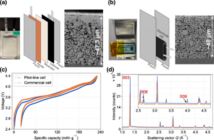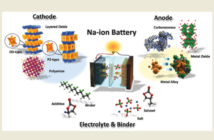What if your wristwatch or other wearable device could communicate directly with your online profiles, storing information about your daily activities where you can best access it, all without requiring batteries.
Or, battery-free sensors embedded around your home could track minute-by-minute temperature changes and send that information to your thermostat to help conserve energy.
The Internet of Things (IoT) is a not so distant reality that will extend connectivity to perhaps billions of devices. Sensors could be embedded in everyday objects to help monitor and track everything from the structural safety of bridges to the health of your heart. But having a way to inexpensively power and connect these devices to the Internet has kept this technology from taking off.
Now, University of Washington engineers have designed a new communication system that uses radio frequency signals as a power source and reuses existing WiFi infrastructure to provide Internet connectivity to these devices. This technology, called WiFi backscatter, is the first that can connect battery-free devices to WiFi infrastructure.
“If Internet of Things devices are going to take off, we must provide connectivity to the potentially billions of battery-free devices that will be embedded in everyday objects,” said Shyam Gollakota, a UW assistant professor of computer science and engineering. “We now have the ability to enable Wi-Fi connectivity for devices while consuming orders of magnitude less power than what WiFi typically requires.”
This work builds on previous research that showed how low-powered devices, such as temperature sensors or wearable technology, could run without batteries or cords by harnessing energy from existing radio, TV and wireless signals in the air. This work takes that a step further by connecting each individual device to the Internet, which previously wasn’t possible.
The challenge in providing WiFi connectivity to these devices is that conventional, low-power WiFi consumes three to four orders of magnitude more power than can be harvested in these wireless signals.
The researchers instead developed an ultra-low power tag prototype with an antenna and circuitry that can talk to WiFi-enabled laptops or smartphones while consuming negligible power.
These tags work by essentially “looking” for WiFi signals moving between the router and a laptop or smartphone. They encode data by either reflecting or not reflecting the WiFi router’s signals, slightly changing the wireless signal. WiFi-enabled devices like laptops and smartphones would detect these minute changes and receive data from the tag.
“You might think, how could this possibly work when you have a low-power device making such a tiny change in the wireless signal? But the point is, if you’re looking for specific patterns, you can find it among all the other WiFi reflections in an environment,” said co-author Joshua Smith, a UW associate professor of computer science and engineering and of electrical engineering.
At UPS Battery Center, our goal isn’t to only sell batteries, we want to inform and teach you about the amazing world of batteries, electricity and energy. Please check back for more interesting, helpful and informative articles about batteries and electricity.
Related Articles:
Chemists get Closer to Developing Next-Gen Energy
How to convert solar power to electrical energy?
A New and More Efficient Solar Cell
Transparent Solar Cells Look Promising for Batteries
World’s First Solar Cell that Stores its Own Power




